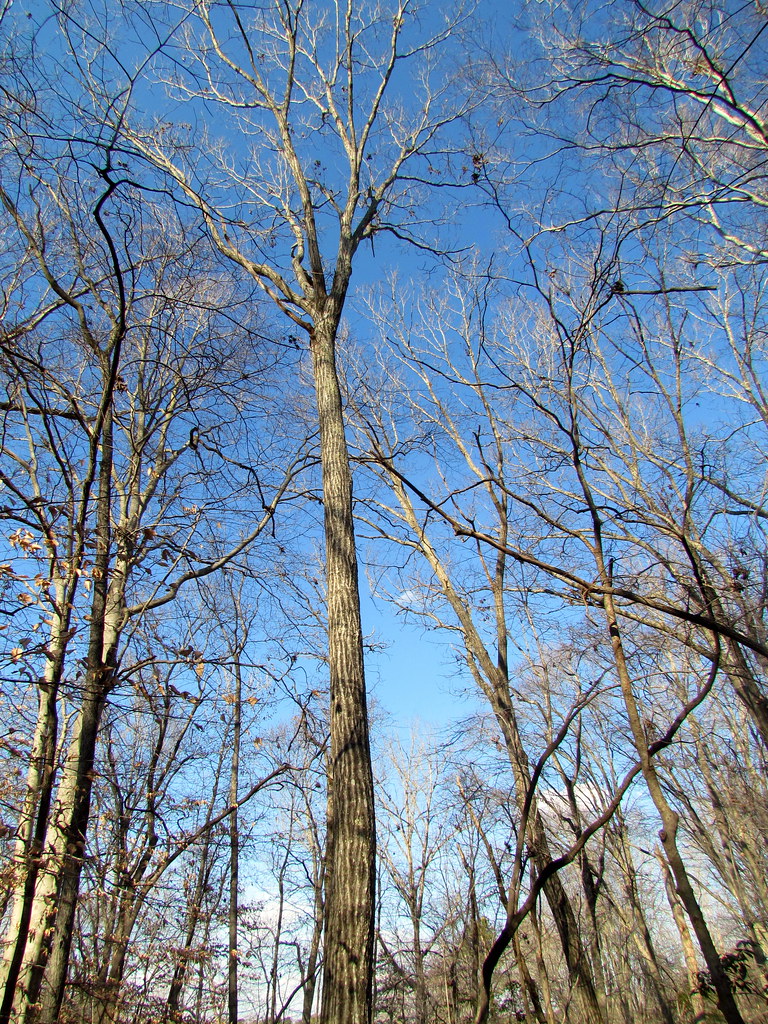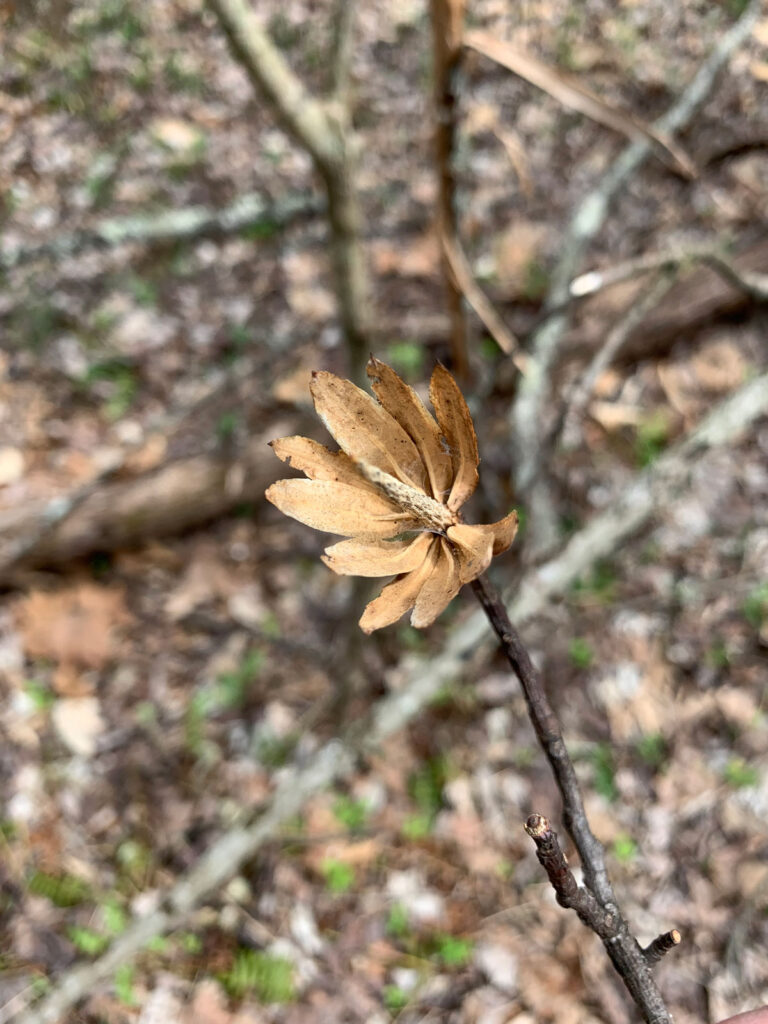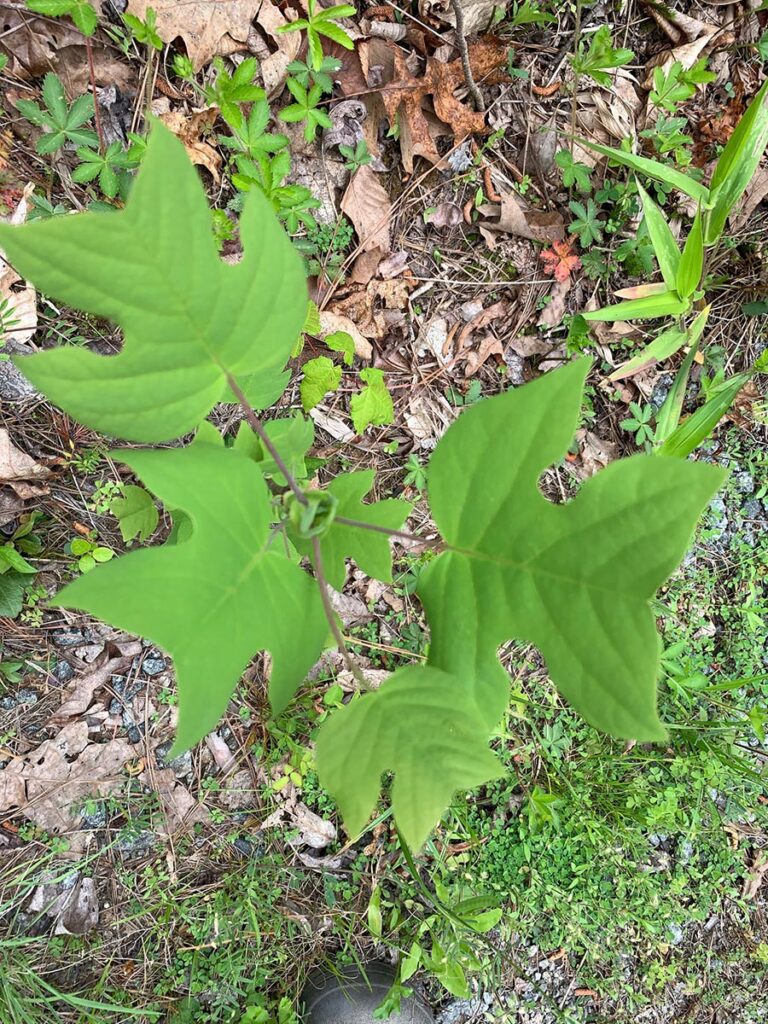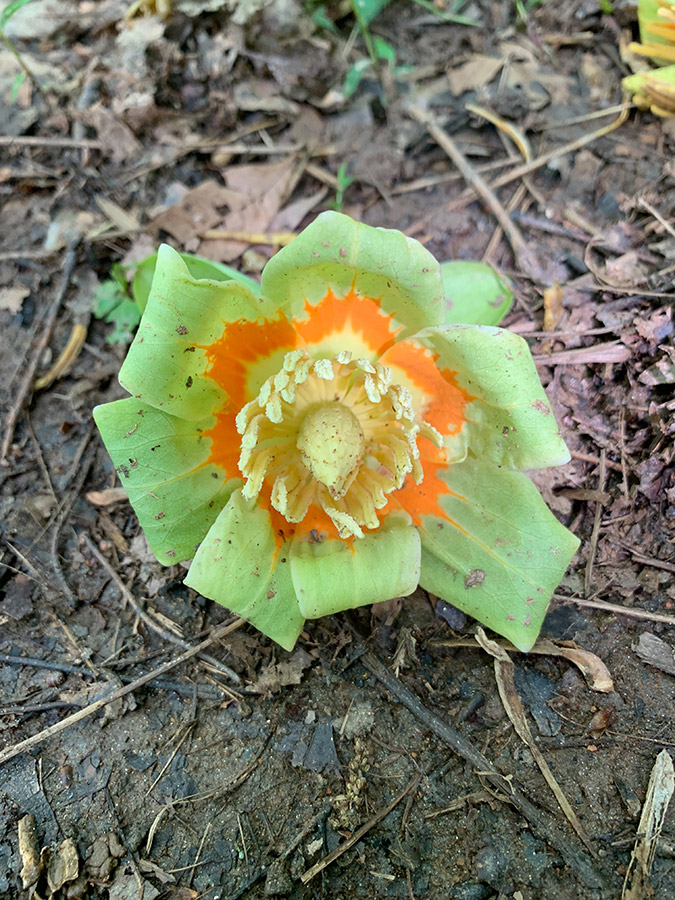Featured Image Credit: “Tulip poplar” by karen_hine is licensed under CC BY 2.0
Two things I learned about Tulip Poplar when writing this post:
- It was actually introduced to North America by European colonists
- It’s a member of the Magnolia Family – which makes sense when you think about how both trees’ flowers look similar.
Other things I knew about the tree before-hand:
- It’s one of honey bee’s favorite flowers in the spring
- It’s flower is of striking appearance
- It has a very straight gray trunk with most branches just at the top
Alternate Names: Tulip Tree, Poplar, Yellow Poplar Size: Up to 150' tall Family: Magnoliaceae (Magnolia Family) Habitat: Low, rich woods; stream banks. Identification: A tall, straight, deciduous tree, up to150 ft. tall (sometimes taller), tuliptree has a medium to narrow crown and distinctive, star-shaped foliage. The leaves are waxy and smooth, and dependably turn bright gold in fall. Showy, yellow-orange, tulip-like flowers are often missed because they are up 50 ft. or higher in the tops of trees. Cone-shaped seedheads remain after leaves have fall. From wildflower.org. Blooms April-June Uses: The wood is used for all sorts of things like furniture, crates, toys, and musical instruments.













